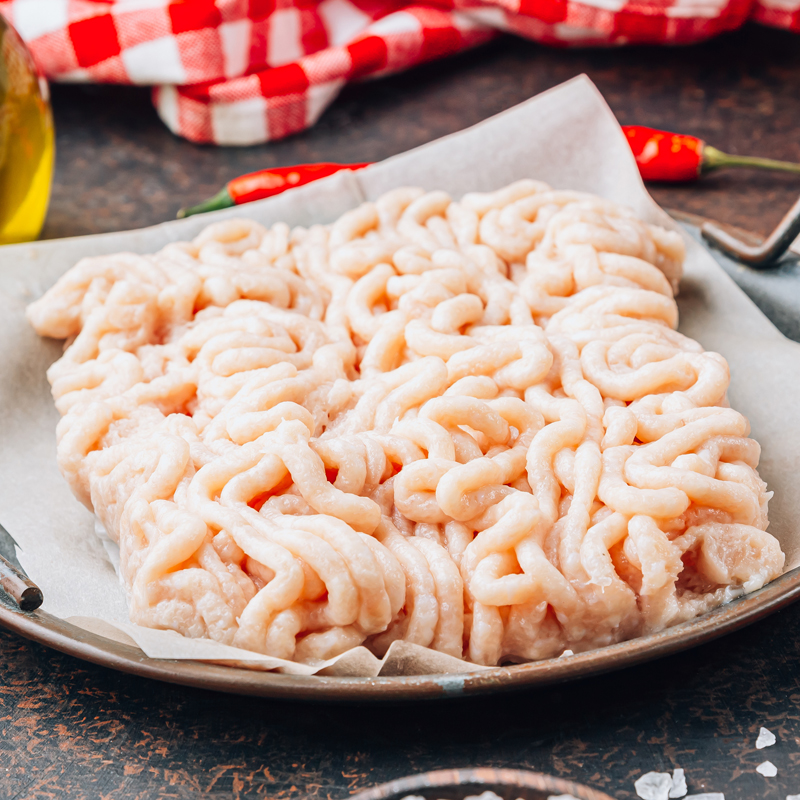
100 gr |
-- |
|
|---|---|---|
| Carbohydrate (gr) | 15.04 |
4928.47 |
| Protein (gr) | 3.59 |
1176.23 |
| Fat (gr) | 12.46 |
4083.43 |
| Fiber (gr) | 1.36 |
445.97 |
| Cholesterol (mg) | 14.64 |
4795.8 |
| Sodium (mg) | 325.27 |
106557.75 |
| Potassium (mg) | 392.16 |
128471.4 |
| Calcium (mg) | 78.15 |
25603.27 |
| Vitamin A (mg) | 46.04 |
15084.01 |
| Vitamin C (mg) | 6.16 |
2019.31 |
| Iron | 0.62 |
203.1 |
Minced chicken, made primarily from lean chicken breast, has become a popular choice in modern kitchens due to its versatility and health benefits. It is a lighter alternative to other minced meats, such as beef or pork, making it an excellent option for those looking to reduce fat intake while maintaining a high protein diet.
The calories in minced chicken are 143 calories per 100 grams.
Minced chicken is low in fat and calories while being high in protein. It is also a good source of essential vitamins and minerals, such as:
Vitamin B6 and Niacin: Essential for energy metabolism and brain health.
Phosphorus: Supports bone health and energy production.
Selenium: Acts as a powerful antioxidant to boost immunity.
Minced chicken made from breast meat contains significantly less fat compared to other minced meats. This makes it ideal for weight management, muscle building, and overall healthy eating.
Replacing red meat with lean minced chicken can help lower cholesterol levels and reduce the risk of heart disease.
The high protein content in minced chicken aids in muscle repair and growth, while its phosphorus and calcium levels contribute to strong bones.
Thanks to its selenium content, minced chicken supports the immune system and helps protect the body from oxidative stress.
To maximize the health benefits of minced chicken, it’s important to use cooking methods that preserve its nutritional value while minimizing added fats and calories. Here are some tips:
Grilling or Baking: These methods avoid adding unnecessary oils while giving the meat a rich flavor.
Steaming or Boiling: Excellent for dishes like soups or casseroles, as they keep the chicken moist without added fats.
Using Non-Stick Cookware: If pan-frying, use non-stick pans to reduce the need for added oil.
Pairing with Vegetables: Combine minced chicken with a variety of vegetables for balanced, nutrient-dense meals.
Chicken Meatballs: A lighter twist on traditional meatballs, seasoned with herbs and baked to perfection.
Lettuce Wraps: A low-carb option using minced chicken cooked with soy sauce, ginger, and garlic.
Healthy Chicken Burgers: Mix minced chicken with spices, form patties, and grill for a delicious meal.
Stuffed Bell Peppers: Minced chicken seasoned and stuffed into bell peppers, then baked for a wholesome dinner.
Minced chicken is an affordable, nutrient-packed, and easy-to-cook option for busy individuals. It adapts well to a variety of cuisines and flavors, making it a go-to ingredient for health-conscious cooks.